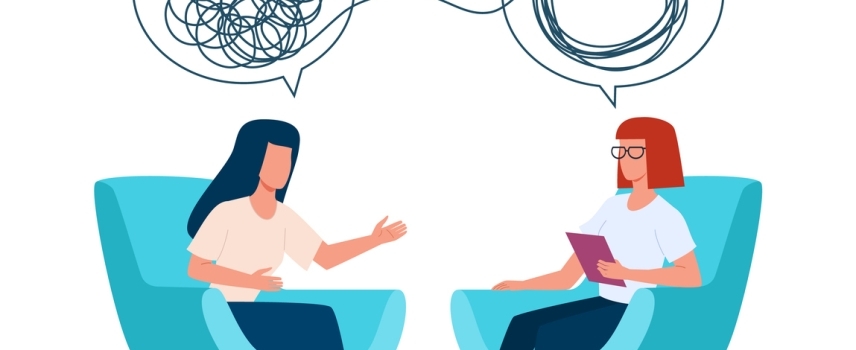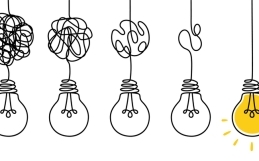Unlocking self-worth and self-trust through the power of connection and curiosity.
Alright, let’s talk therapy. When you walk into a therapist’s office (or open your laptop for a virtual session), you’re not just there to rant about your week or unpack the emotional baggage you’ve been lugging around. No, it’s way deeper than that. You’re stepping into a space designed for more than just venting. It’s about reshaping one of the most vital relationships in your life—the one with yourself.
Sure, people show up to therapy for all kinds of reasons. Anxiety, tough life transitions, dealing with old wounds, improving their relationships… the list goes on. But therapy isn’t about “fixing” you, because spoiler alert, you’re not broken. Therapy is about learning to connect with your inner world in a way that gives you clarity, strength, and a sense of balance long after the session ends.
Exploring Curiosity Instead of Judgment
Here’s the thing about stepping into therapy: It can awaken that inner critic of yours. You know, that judgy voice that’s quick to tell you, “You shouldn’t feel this way,” or, “Wow, you’re such a wreck for thinking that.” But here’s the twist a good therapist offers you instead of joining that mental beatdown. They ask you to tap into curiosity.
Imagine this. You walk into a session feeling miserable because you snapped at a friend. Your first thought? “I’m the worst. I should be more patient.” (Cue shame-monster.) A skilled therapist won’t just pat you on the back and feed you canned reassurance. Nope, they’ll gently lean into your discomfort and ask, “Okay, what’s underneath that guilt? Could it be pointing to something deeper, like maybe fear or insecurity?”
Suddenly, you’re not stuck in shame-spirals but looking at the emotions driving your snap. Maybe you realize it connects to a time you felt ignored as a kid. That clarity may not make everything magically better, but it does help you step back and say, “Oh, so that’s why.” This shift—from blaming yourself to understanding yourself—is the kind of magic that builds self-compassion. And the cherry on top? It makes you way better at handling emotions in your relationships.
The Overthinker’s Trap
If you’re someone who fights emotions by outthinking them, you’re not alone. Ever catch yourself explaining a conflict in 37 bullet points instead of admitting you’re hurt? We all do this to some extent, turning feelings into logic puzzles. Guess what? Therapy has something to say about that, too.
Good therapy doesn’t sit you down and say, “Stop analyzing everything!” That would just add to the overthinking pile. Instead, it gently invites you to stop spinning your wheels for a second and actually feel what’s happening. The therapist might say, “Alright, hold up. What’s the emotion or hurt behind all that analysis? And where do you feel it in your body?”
Wait a second. Feel it? What a novel concept, right? But here’s the deal. When you stop running from those raw emotions and actually face them, you’re building something bigger than emotional intelligence. You’re building resilience. Over time, you’ll notice you don’t have to dissect situations within an inch of their lives. Instead, you can sit with your emotions, understand them, and move forward.
From Self-Abandonment to Real Connection
A lot of people show up to therapy hyper-focused on everyone else. “Why does my partner do this?” “How can I fix things with my mom?” These are valid questions, but therapy often flips the script. It redirects your attention to moments when you might’ve left yourself behind to appease others.
This shift isn’t comfortable. Nobody wants to think about all those times they ignored their own needs for the sake of keeping the peace. But once you start to notice these patterns, you create space to change them. You can actually honor your needs instead of focusing only on being liked, loved, or accepted. That’s what opens the door to healthier, more fulfilling relationships—with others and with yourself.
“What Should I Do?”
Every therapist has heard this question a hundred times. What should I do about this decision, this conflict, this feeling? It’s totally normal to crave a quick fix, but therapy isn’t Google maps for your life. A great therapist won’t hand you a “top 10 tips” list and send you on your way. They’ll encourage you, gently, to sit with the uncertainty. Why? Because there’s a ton of wisdom buried in your discomfort.
For example, take someone facing a tough career decision. They might walk in seeking advice, but the therapist will likely guide them through their internal maze instead. By paying attention to what feels exciting versus daunting, they might uncover values or fears they hadn’t quite named. Over time, they build self-trust. They learn to rely less on external opinions and more on their own internal compass. That’s empowerment, my friend.
Being Seen Changes Everything
Ever sit across from someone who’s 100% tuned into you? No distractions, no quick fixes, just present and attuned? If not, therapy might be the first place you experience it. And when someone sees you like that, it wakes up something in you.
For some, it’s deeply comforting. For others, having someone acknowledge their inner world can feel strange and even scary. But that attunement is critical. It trains your brain to feel worthy of attention and care. Over time, you start to offer yourself that same attunement in your own life.
The Healing Blueprint
The therapeutic relationship is profound because it’s a model for how you can relate to yourself. The curiosity, the emotional space, the attunement you experience with a therapist? That’s the same toolkit you can use to build a healthier, more connected relationship with your inner world.
Through this process, you strengthen your self-worth and self-trust. And those two things? They’re the foundation for a more authentic, fulfilling life. Therapy doesn’t just change how you think about yourself temporarily; it helps you see yourself in a whole new light. And that’s where real healing begins.





